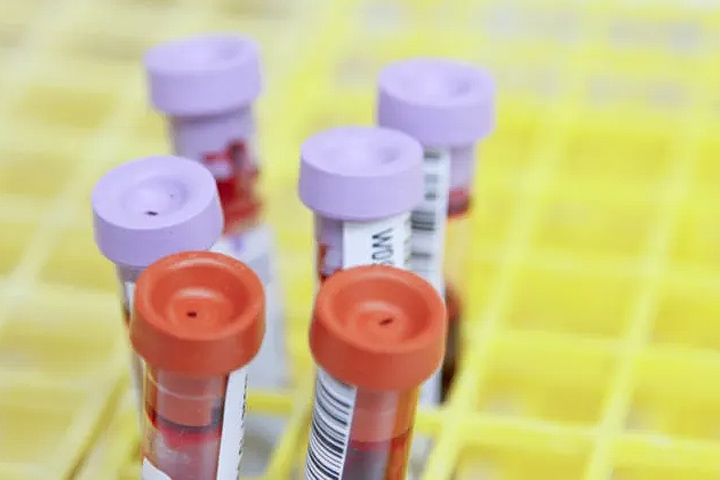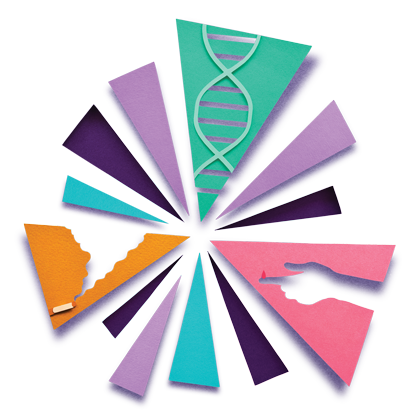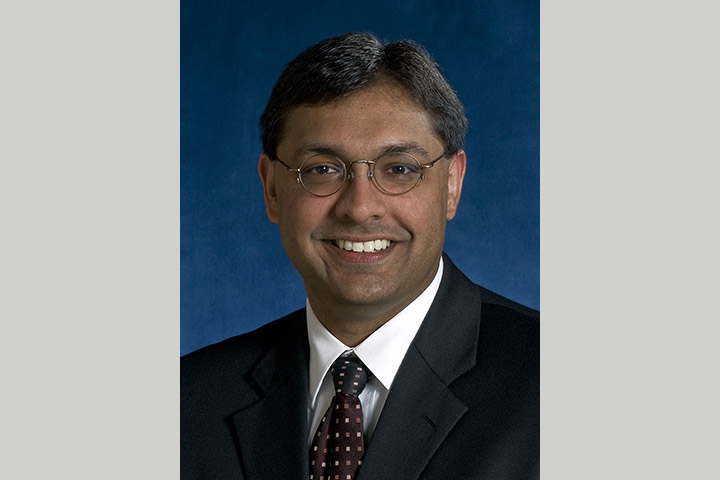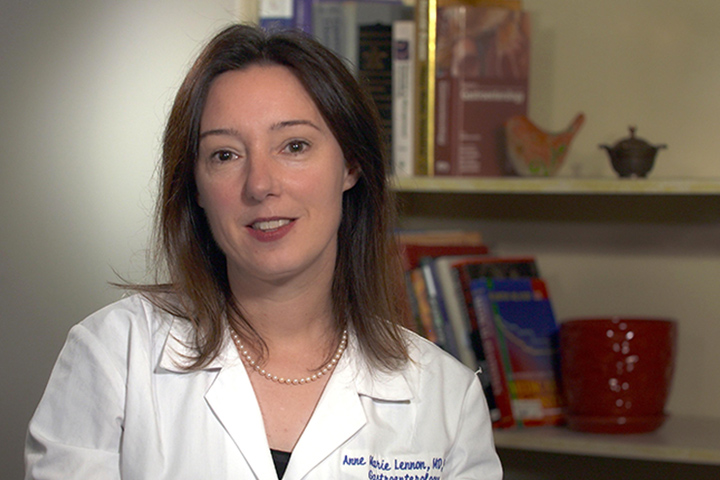Understanding Who Is at High Risk for Pancreatic Cancer

If you have an immediate family member who was diagnosed with pancreatic cancer, you may be wondering if you’re at high risk of developing the disease yourself—and if so, what you can do about it.
“One out of 10 people with pancreatic cancer have a family history of the disease, meaning they have an identifiable inherited risk factor,” explains Matthew Yurgelun, M.D., an oncologist at Dana-Farber Cancer Institute in Boston, Massachusetts. “And one in 10 people also have a family history of pancreatic cancer. But these two groups only partially overlap.” He continues, “So if you have two or more close relatives who had pancreatic cancer, or you have an identifiable inherited genetic risk factor for the disease plus a relative with pancreatic cancer, it may be worth considering high-risk screening.”
What Does “High Risk” Look Like?
There are a number of different factors that can increase your risk of developing pancreatic cancer. But even if you have several risk factors, that doesn’t mean you will get cancer. In fact, up to 90% of pancreatic cancer cases happen due to genetic changes that develop by chance after birth, rather than inherited genetic factors.
Still, there are certain factors—some you can change, and some you can’t—that may increase your risk of developing pancreatic cancer.
Risk Factors You Can Change
- Smoking: Researchers estimate that up to one-quarter of pancreatic cancers are caused by cigarette smoking.
- Obesity: People who are obese are 20 percent more likely to develop pancreatic cancer.
- Exposure to certain substances: People who are exposed to heavy amounts of certain chemicals may be at increased risk of developing pancreatic cancer.
Risk Factors You Can’t Change
- Age: As with many cancer types, the older you are, the higher your risk of developing pancreatic cancer.
- Gender: Men are at a slightly increased risk of pancreatic cancer compared to women.
- Race: African Americans have a higher risk of pancreatic cancer than Caucasians, though the reason behind this disparity isn’t clear.
- Family history and inherited genetic mutations: Pancreatic cancer seems to run in families, whether due to an inherited syndrome or some other unknown risk factor. Although family history can increase the risk of developing pancreatic cancer, most people who get the disease do not have a family history.
Pancreatic Cancer Screening Protocols
For some cancer types, screening is recommended to everyone after they reach a certain age, regardless of their personal risk factors. Unlike colon, breast, skin, and prostate cancers, there is no easy test for pancreatic cancer, and so no major professional groups currently recommend widespread screening for this cancer.
While screening protocols do exist for pancreatic cancer, the guidelines are a lot murkier than, say, getting a mammogram to catch an early breast cancer or a colonoscopy to detect colon cancer. “With pancreatic cancer, there’s no one-size-fits-all screening method,” explains Yurgelun.
Instead, doctors cobble together various methods to find pancreatic cancers when they’re at a more treatable stage. The two key methods:
Genetic Testing
The National Comprehensive Cancer Network (NCCN) now recommends all pancreatic cancer patients—regardless of family history—receive genetic testing for inherited mutations that can increase their risk of developing the disease.
“If you have pancreatic cancer, we recommend genetic testing,” says Yurgelun. “Most of the genes we’re looking at, such as BRCA1 and BRCA2, predispose you to a spectrum of different cancers, including breast, ovarian, prostate, and pancreatic cancers.” If the pancreatic cancer patient is positive, then the immediate family members should get tested.
Genetic testing looks for the gene changes that cause these inherited conditions and increase pancreatic cancer risk. You may have an elevated risk if you have one of these conditions, but that doesn’t mean you will definitely get pancreatic cancer.
Imaging
For people who meet specific high-risk familial and/or genetic criteria for pancreatic cancer risk, Yurgelun recommends that they consider an annual evaluation of the pancreas using one of two advanced imaging exams, typically beginning at age 50:
- Magnetic resonance cholangiopancreatography (MRCP): MRCP is a noninvasive MRI of the pancreas. MRCP uses a high-powered magnetic field, radio waves, and a computer to evaluate the pancreas and pancreatic duct for disease, as well as the liver, gallbladder, and bile ducts—all without any ionizing radiation.
- Endoscopic ultrasound (EUS): With EUS, doctors insert an endoscope into your mouth and through the esophagus, stomach, and duodenum. A small ultrasound probe at the tip of the tube emits high-frequency sound waves to capture detailed images of the chest, digestive tract, pancreas, bile ducts, and liver.
Doctors who follow high-risk patients often toggle between these imaging exams on an annual basis. So one year you would do an MRCP and the next, an EUS. There are drawbacks to each—false positives, cost, the need for anesthesia, and some people have difficulty tolerating the MRI.
“Unfortunately, with both of these imaging methods, one out of three patients have findings that require ongoing monitoring, most commonly cysts,” Yurgelun says. “For someone who has a family history of the disease, it’s alarming for patients to hear, ‘we’ve found something on your pancreas, and we need to watch it.’” And yet, finding pancreatic cancer early offers the best chance of long-term survival.
What If Doctors Find a Pancreatic Cyst?
Cysts in the pancreas are quite common, and may be even more common in people who have family histories of pancreatic cancer. When doctors find cysts on imaging exams—before noticeable symptoms set in—they can follow patients more closely. Rarely, pancreatic cysts may require a biopsy or even surgery. Some medical centers, including Johns Hopkins (Baltimore, Maryland), have a “cyst clinic” that follows patients with pancreatic cancer cysts.
The removal of a pancreatic cyst involves removing a portion of the pancreas itself and is far more complicated than the 15- to 30-minute procedure to remove a precancerous colon polyp. Fortunately, surgical removal of pancreatic cysts is only needed in a small number of cases, typically only when there are specific worrisome features, such as significant growth of the cyst over a short period of time. Still, some experts say an operation to remove a cyst with these worrisome features may be well worth the risk in specific cases. After all, it’s far better than the alternative: catching pancreatic cancer at a later stage when it’s more difficult to treat.






